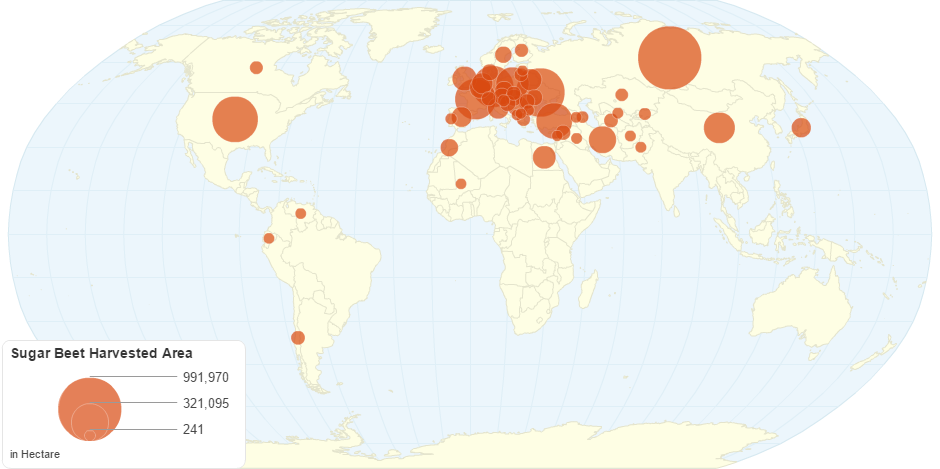This chart shows Sugar Beet Harvested Area by Country.
Sugar beet is the Altissima Group of cultivars of the common beet.It is a plant whose root contains a high concentration of sucrose and it is grown commercially for sugar production. Sugar beets and other beet cultivars, such as beetroot and chard, are members of Beta vulgaris subsp. vulgaris and share a common wild ancestor, the Sea beet.
The sugar beet has a conical, white, fleshy root with a flat crown. The plant consists of the root and a rosette of leaves. Sugar is formed by photosynthesis in the leaves, and is then stored in the root. The root of the beet contains 75% water, about 20% sugar, and 5% pulp.Sugar is the primary value of sugar beet as a cash crop.
The pulp, insoluble in water and mainly composed of cellulose, hemicellulose, lignin, and pectin, is used in animal feed. The byproducts of the sugar beet crop, such as pulp and molasses, add another 10% to the value of the harvest.
To cultivate beets successfully, the land must be properly prepared. Deep ploughing is the first principle of beet culture. It allows the roots to penetrate the subsoil without much obstruction, thereby preventing the beet from growing out of the ground, besides enabling it to extract considerable nourishment and moisture from the lower soil. If the latter is too hard, the roots will not penetrate it readily and, as a result, the plant will be pushed up and out of the earth during the process of growth.
A hard subsoil is impervious to water and prevents proper drainage. It should not be too loose, however, as this allows the water to pass through more freely than is desirable. Ideally, the soil should be deep, fairly fine and easily penetrable by the roots.
9 years ago

